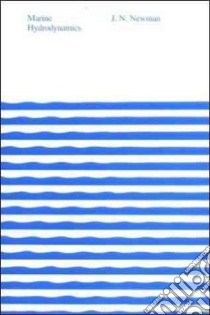- Libreria
- >
- Libri in lingua
- >
- Ingegneria
- >
- Architettura navale
Marine Hydrodynamics - 9780262140263
Un libro in lingua di J N Newman edito da The MIT Press Ltd, 1977
- € 105.80
- Il prezzo è variabile in funzione del cambio della valuta d’origine
Marine Hydrodynamics was specifically designed to meet the need for an ocean hydrodynamics text that is up-to-date in terms of both content and approach. The book is solidly based on fundamentals, but it also guides the student to an understanding of their engineering applications through its consideration of realistic configurations. Such texts have proved valuable in aerodynamics courses, but in hydrodynamics a wide gap has existed between basic texts on fluid mechanics and the engineering handbooks that are the stock-in-trade of ship designers.
The book was developed from course notes used at MIT and other institutions at the late undergraduate and graduate levels. Although a knowledge of advanced calculus is required, the student is not assumed to have studied fluid mechanics, and the principles of this subject are developed in the course of the presentation. In the same way, the specific concepts of hydrodynamics are developed in a self-contained manner, with the emphasis on fundamentals, concise derivations, and simple examples.
Problems and extensive references are included with each chapter. SI units are used throughout (although the seaworthy "knot" survives); an appended table facilitates conversation with respect to English units. The physical properties of water and air are also summarized in the appendix.
After the general framework of the subject has been established, the applications that are introduced include not only the traditional problems of ship hydrodynamics that are encountered in naval architecture, such as resistance and propulsion, maneuvering, and seakeeping, but also closely related problems in the newer field of ocean engineering, such as wave forces acting on oil drilling rigs, storage vessels, and pipelines submerged in currents. The first chapter briefly outlines the subject; those that follow take up in turn model testing, the motion of a viscous fluid, the motion of an ideal fluid, lifting surfaces, waves and wave effects, and the hydrodynamics of slender bodies.
Informazioni bibliografiche
- Titolo del Libro in lingua: Marine Hydrodynamics
- Lingua: English
- Autore: J N Newman
- Editore: The MIT Press Ltd
- Data di Pubblicazione: 01 Gennaio '77
- Genere: TECHNOLOGY and ENGINEERING
- EAN-13: 9780262140263


